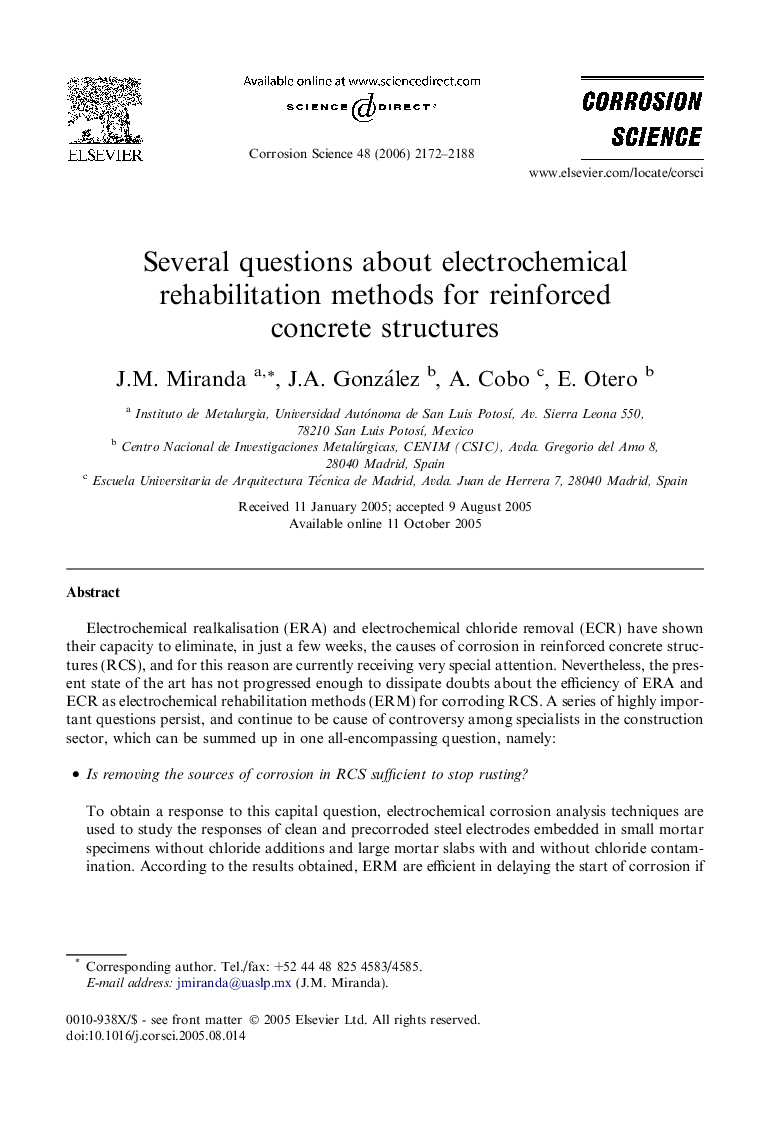| Article ID | Journal | Published Year | Pages | File Type |
|---|---|---|---|---|
| 1471699 | Corrosion Science | 2006 | 17 Pages |
Electrochemical realkalisation (ERA) and electrochemical chloride removal (ECR) have shown their capacity to eliminate, in just a few weeks, the causes of corrosion in reinforced concrete structures (RCS), and for this reason are currently receiving very special attention. Nevertheless, the present state of the art has not progressed enough to dissipate doubts about the efficiency of ERA and ECR as electrochemical rehabilitation methods (ERM) for corroding RCS. A series of highly important questions persist, and continue to be cause of controversy among specialists in the construction sector, which can be summed up in one all-encompassing question, namely:•Is removing the sources of corrosion in RCS sufficient to stop rusting?To obtain a response to this capital question, electrochemical corrosion analysis techniques are used to study the responses of clean and precorroded steel electrodes embedded in small mortar specimens without chloride additions and large mortar slabs with and without chloride contamination. According to the results obtained, ERM are efficient in delaying the start of corrosion if used preventively. However, if applied too late they do not assure the repassivation of rebars with high precorrosion levels and consequently are not useful.
